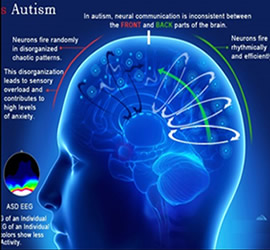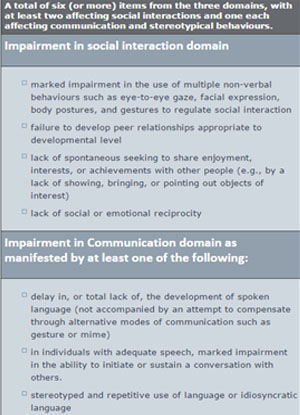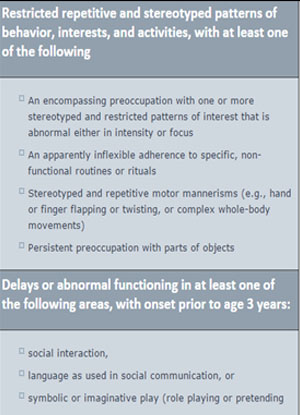 Autism spectrum disorder (ASD) is a complex developmental disability; signs typically appear during early childhood and affect a person’s ability to communicate, and interact with others.
Autism spectrum disorder (ASD) is a complex developmental disability; signs typically appear during early childhood and affect a person’s ability to communicate, and interact with others.
ASD is defined by a certain set of behaviors and is a “spectrum condition” that affects individuals differently and to varying degrees.
There is no known single cause of autism, but increased awareness and early diagnosis/intervention and access to appropriate services/supports lead to significantly improved outcomes
The precise cause of ASD remains a mystery but mounting evidence points to both environmental and genetic factors.
The risk of inheriting ASD is 37-90% but there are also many mutations associated with ASD that may be present in a family member for the first time.
Scientists have identified chromosomal abnormalities and single gene disorders that share symptoms with ASD and hundreds of ASD-linked genes that they think might confer susceptibility.
Researchers are trying to understand how ASD-linked genes work.
Some of the genes are known to connect neurons in the brain, and others are involved in the immune system. One theory is that the brain may develop abnormally if ASD-linked genes are active at the wrong time and place as the fetus develops.
In March 2014, the Centers for Disease Control and Prevention issued their ADDM autism prevalence report. The report concluded that the prevalence of autism had risen to 1 in every 68 births in the United States – nearly twice as great as the 2004 rate of 1 in 125 – and almost 1 in 54 boys.
The spotlight shining on autism as a result has opened opportunities for the nation to consider how to serve families facing a lifetime of supports for their children.


There are many research teams around the globe working to understand how stem cells could be applied to autism. Collectively, these groups have identified making human models of autism a priority because animal models do not entirely mimic autism as it unfolds in humans.
One of the challenges is finding a good source of neurons for the purpose of creating laboratory models.
This is not so simple because it’s not possible to remove neurons from a living person. This is where induced pluripotent stem (iPS) cells may be able to help. Their discovery in 2006 by 2013 Nobel Prize winner Dr. Shinya Yamanaka was nothing short of revolutionary. Dr. Yamanaka managed to turn back the clock on adult skin cells and reprogram (induce) them to a more youthful state.
The cells are called ‘pluripotent’ because they are no longer locked into making only one type of cell but instead can make a variety of different types of cells, including neurons. The iPS cells made from the skin of people with autism can be grown into neurons for laboratory models.
The road to finding a stem cell therapy for autism is paved with many challenges that will take time to overcome, but researchers are learning a great deal from investigating autism spectrum disorders and disorders that share characteristics with autism, such as Rett syndrome, Fragile X, and Timothy syndrome.

Av. Masferrer South. Urb. Maquilishuat No. 1006. San Salvador, El Salvador. CA.
(503) 2268-5999 Fax. 2268-5910
www.stemcell-elsalvador.com - info@stemcell-elsalvador.com